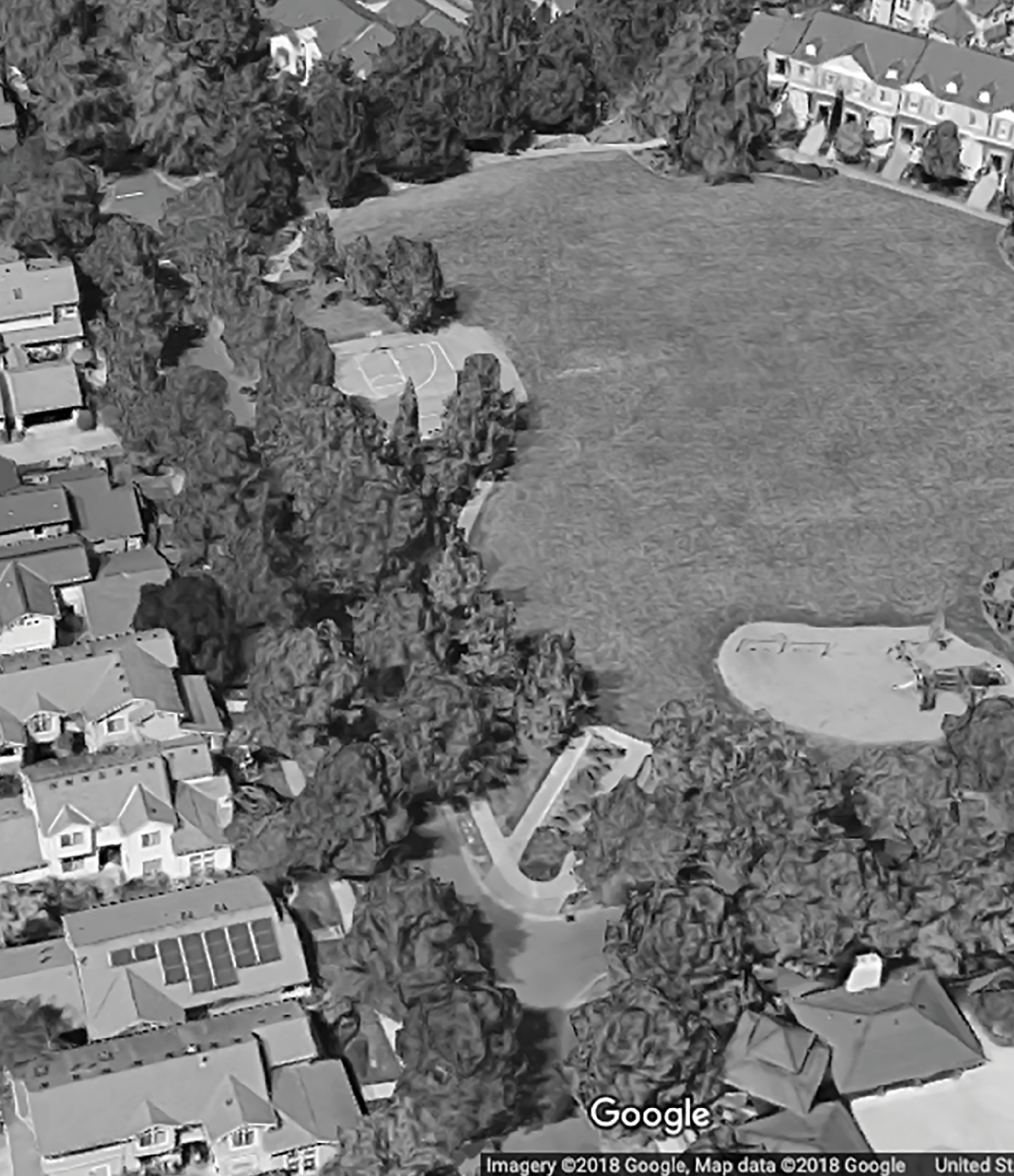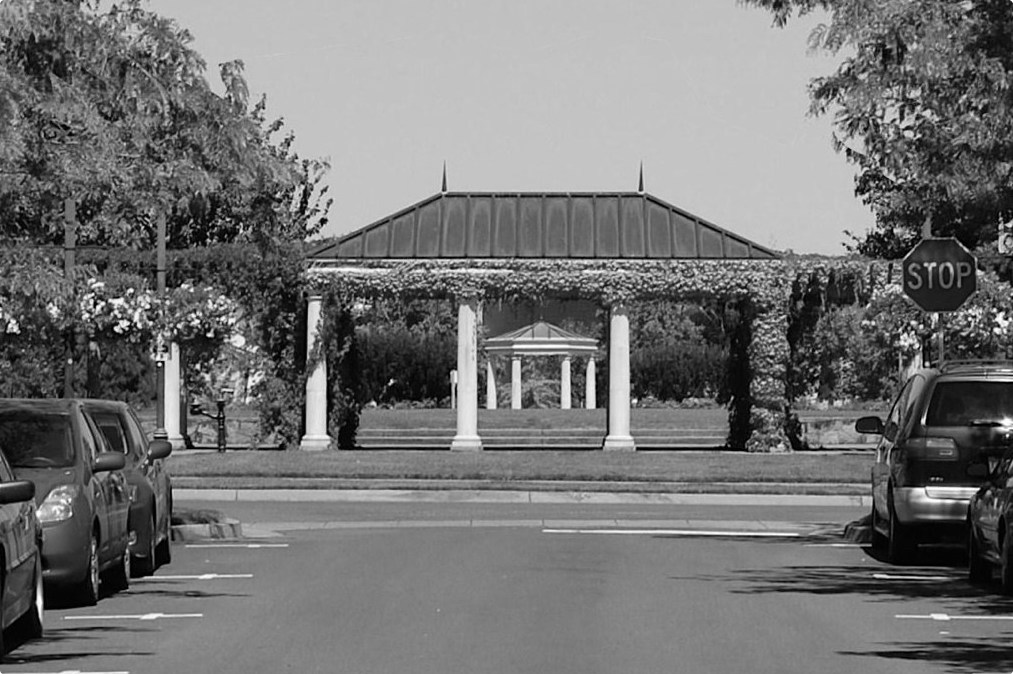…Within the Pedestrian Sanctuary, provide amenities for recreation and gathering.

__Problem-statement: At the scale of a neighborhood, there is a need for quieter recreational spaces with ample vegetation, and more protected from faster-moving vehicles.__
Discussion: Neighborhood parks are not the same as regional parks, which may be quite large. Generally, neighborhood parks can range from one hectare (2.5 acres) to as small as 20 square meters (200 square feet) or the size of a “pocket park”. The important factor is that every residence is within about 250 meters, or about 750 feet, of one of these parks. A secondary factor is that these spaces are focal points for the surrounding neighborhood, allowing quieter family-scale gatherings and informal sports events.
Overwhelming scientific evidence links human health to intimate exposure to natural green vegetation, as discussed in the pattern Biophilic Urbanism. At the same time, people will not use a park frequently unless it is close to their home, and easily accessible by foot. This implies a need for local neighborhood parks distributed regularly throughout the city — close enough for everyone to access one or more by walking. That suggests a distribution of approximately 400 meters (1300 feet), so that each home is within 200 meters (650 feet) of one or more parks.
A key requirement for neighborhood parks is that they are visible from nearby residences, and there is an opportunity for residents to provide stewardship for their security and care. There is also a need to have active uses along their edges, so that these edges do not become dead zones, severing and isolating the parks from the surrounding neighborhood.¹

Pavilions in a neighborhood park in Hillsboro, Oregon, that hosts weddings, acoustic music events and other neighborhood-scale activities.
Neighborhood parks can also provide pavilions and other shelters to allow for small-scale events such as weddings, acoustic music performances, and other activities that are compatible with surrounding residences.
__Therefore: Within the sanctuaries, create neighborhood parks that serve as quiet oases for residents, with ample greenery and natural characteristics such as ponds and waterfalls. Assure that one of these parks is within about 200 meters (650 feet) of every residence. Provide for recreational activities including play structures for children. Provide sheltered spaces for activities including acoustic music and small neighborhood gatherings.__

Create room-like spaces, especially at the edges, forming a Place Network…
notes
¹ One of the seminal accounts of neighborhood park structure and its requirements was provided by Jane Jacobs in her landmark The Death and Life of Great American Cities, and especially , Chapter 5, “The Uses of Neighborhood Parks.” See Jacobs, J. (1961) The Death and Life of Great American Cities. New York: Random House.
See more Neighborhood Patterns